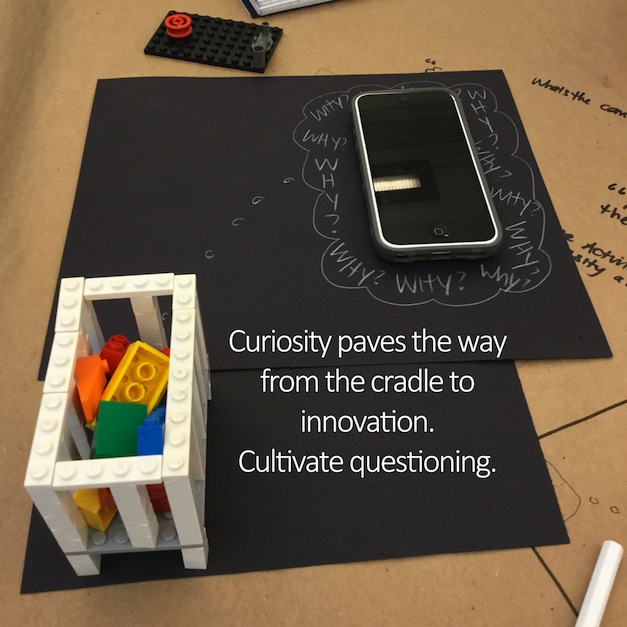
The new year is upon us, which means that many of us are striving to build new habits. As we all know, resolutions and indeed any kind of change in our behavior is hard. Building new habits requires that we have a deep belief in the power of the change we want to bring about, confidence that we can advance toward that change, and a manageable routine to get there. For our resolutions to stick, we need all of three of these, but I argue that the first is the most critical. The stronger our belief in the change we want to see, the more likely we are to devise and commit to a strategy to get ourselves there. Commitment to something we truly value drives our creative problem solving and follow through. When the going gets tough, commitment to what we value is what keeps us going – either through force of will or by helping us to imagine a different path.
For us at the Columbus Museum of Art, that means remembering and helping others understand why creativity is so important to ourselves, our communities, and our world, and what they can do to help spread it. Finding ways to better and more deeply spread creativity – the process of using imagination and critical thinking to generate new ideas that have value – is our perpetual resolution. As with any resolution, it is a deep commitment that will compel and propel change.
One of our most recent initiatives to spread creativity was the creation of our first-ever Leaders for Creativity Fellowship. This initiative, supported by the Martha Holden Jennings Foundations, brings together some of the most incredible, reflective, imaginative, and curious teachers we have had the pleasure of working with. Together we explore how to better support creativity in learning, and collaborate to lead for creativity throughout the school system.
Unsurprisingly, a recurring theme in conversations with this group was the need for a shared understanding and commitment to creativity among families, teachers, administrators, and the community. Life is full of competing priorities, and as with our New Year’s resolutions, those desired changes that aren’t grounded in a powerful belief are likely the first to be dropped. In the eyes of the group, families, educators, and other stakeholders need to better understand what creative thinking is, and why it is the most important skillset needed for our future. Everyone wants the children they care for to be successful, but how well do adults understand the mindsets and dispositions children will need in a rapidly-changing world? How closely does the school experience align with what we hope children will learn and who they might become?
The need to advocate – to help families, educators, and decision-makers understand the importance of creativity – was especially apparent with certain key habits that get short shrift in schools, such as curiosity, play, and risk taking. So for our December meeting, we decided to do a special creativity challenge: Working in pairs and using only Legos, black construction paper, and chalk, create a public service announcement (PSA). Each group was assigned a particular audience: “parents/families,” “administrators,” or “reluctant colleagues,” and a habit of creativity: “Play,” “Curiosity,” or “Risk taking.” The only additional parameters were that they only had 30 minutes to create something that needed minimal explanation and alteration in order to be “press ready.” It was an ambiguous challenge – just like the kind we would assign to young learners! It also adhered to one of our favorite sayings from our educational advisor Dr. Fred Burton, “Never work harder than your students” (in this case, our teacher fellows.)
See below to see what they came up with.
PSAs for Creativity
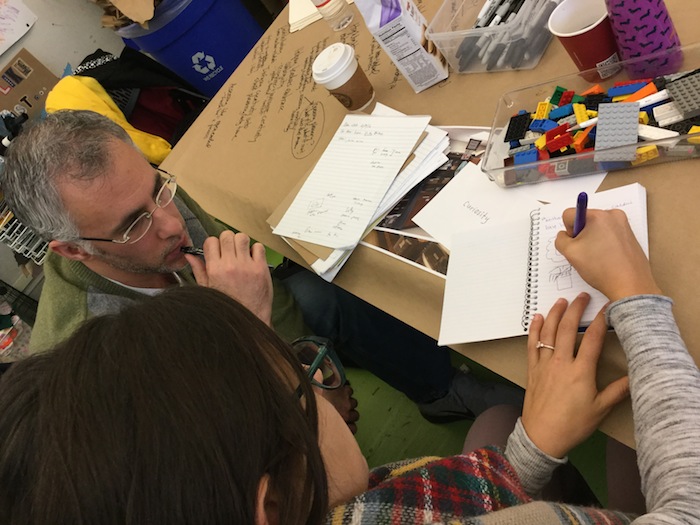
Jason Blair and Marcella Cua were asked to create a PSA for curiosity, addressed to parents and families.
They zeroed in on the natural curiosity of young children (represented by a cradle), which is often suppressed as children get older. Curiosity is the basis of everything we know, and is necessary for innovation.
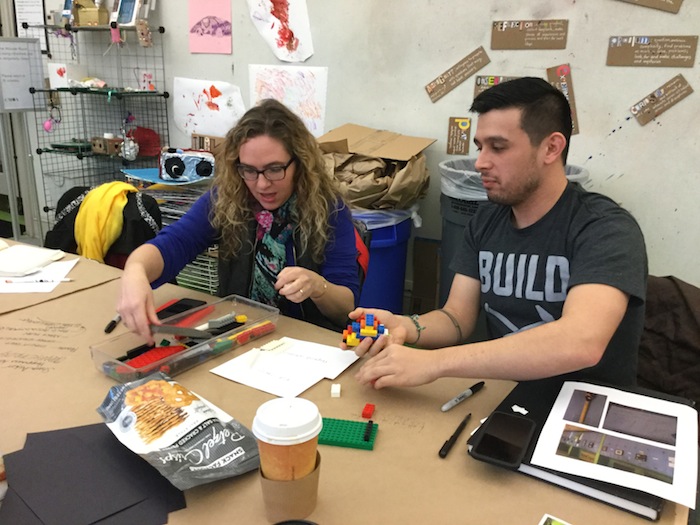
Britanie Risner and Matt Szozda were challenged to create a PSA in support of risk taking, addressed to reluctant colleagues.
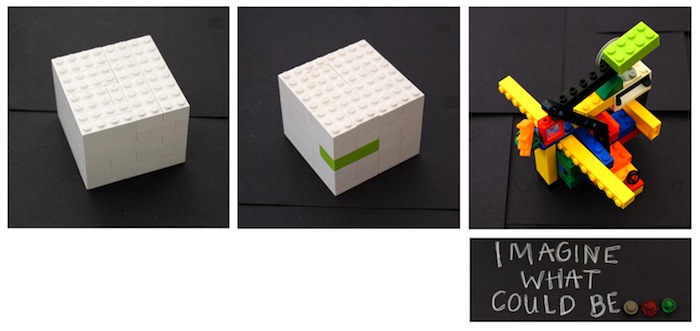
A single green Lego encroaches on the plain white box, and sparks a transformation (note the green Lego reappears at the top right of the new invention.)
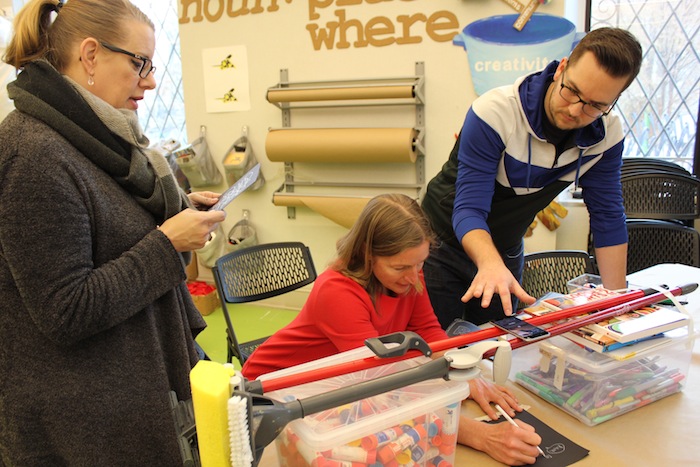
Finally, Patrick Callicotte, Becky Coyne, and Emily Risner used a stop-motion animation app and some random odds-and-ends to create a video to promote Play among administrators.
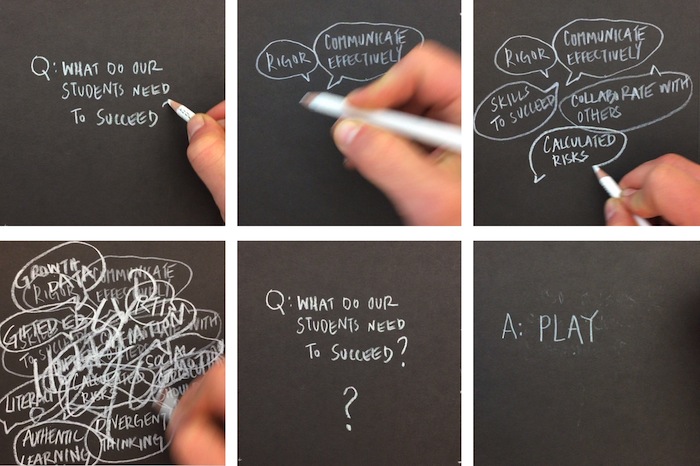
The deluge of needs and priorities in schools can seem dizzying. Ultimately, however, play is the cornerstone of all learning.
It was fascinating to see the really different (and yes, creative) ways that each group approached the challenge. More to the point, we were delighted to see such simple materials so quickly transformed into opportunities to spread the word about the importance of curiosity, risk taking, and play. These dispositions of creativity are vital for success in life, learning, work, and change.
This creativity challenge to make on-the-spot public service announcements is a somewhat cheeky way to package bite-sized messages about the importance of creativity. Advocating for why creativity is vital to thriving lives and communities is ongoing, profound work. But if nothing else, we hope that these whimsical PSAs start conversations about why creativity matters – conversations that will form the foundation for change for creativity.
-Jennifer Lehe is Manager of Strategic Partnerships for Columbus Museum of Art.
